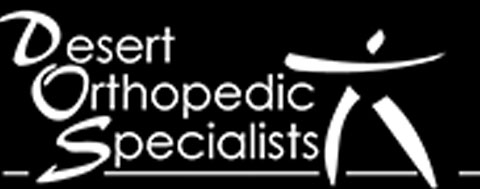Non-Surgical Treatments for Knee Pain, Knee Injuries and Osteoarthritis of the Knee
Patients in Scottsdale and the greater Phoenix metro area who are experiencing knee problems but are looking for non-invasive treatment options should consider scheduling a consultation with the orthopedic team at Desert Orthopedic Specialists.
We understand that surgery is usually the very last option most patients experiencing knee problems want to use. Our team is committed to eliminating all other possible non-invasive treatment options before resorting to more invasive treatment options.
Some of our non-surgical surgical treatment options include platelet rich plasma (PRP) injections, prolotherapy, physical therapy, steroid and viscosupplementation injections and mobility aids.
Prolotherapy and PRP
Platelet Rich Plasma (PRP) and prolotherapy injections accomplish similar patient outcomes through two very different methods of treatment.
PRP injections are comprised of a patient’s own plasma, which is obtained by separating platelets from the mixture of water, proteins, red bloods cells and white blood cells that make up a patient’s blood. The platelets, or thrombocytes, are the parts of blood primarily responsible for clotting and healing.
These platelets can provide a healing jumpstart when injected into damaged or injured parts of the body such as the knee joint or the surrounding tendons or ligaments.
Prolotherapy injections also stimulate healing but do so by irritating an inflamed or damaged joint. Prolotherapy is a natural and safe way to trigger the body’s healing response through a carefully targeted injection.

Physical therapy plays an important role in most orthopedic knee treatment plans. Some patients who have knee injuries may be able to find pain relief and restore mobility and strength through physical therapy alone, or with physical therapy combined with other non-invasive and non-surgical treatment options.
For patients who have undergone or are scheduled to undergo knee surgery, physical therapy will be an important aspect of recovery. After knee surgery has been performed, whether a total knee replacement or a minimally invasive knee arthroscopy procedure, a comprehensive and faithfully followed physical therapy regime will help the patient regain strength and mobility.
Viscosupplementation of the Knee
Synovial joints, such as the knee, contain synovial fluid, which lubricates the cartilage that’s present where the femur, tibia and patella meet. This fluid helps reduce friction within the joint and is vital to providing the knee with a normal, pain-free range of motion. For patients with osteoarthritis of the knee, the pain they experience is, at least in part, due to the wearing down of the cartilage that cushions joint, often because the synovial fluid isn’t adequately lubricating and protecting the cartilage in the joint.
During viscosupplemenation, hyaluronate fluid is injected into the synovial cavity, which helps lubricate the joint and reduce the amount of unlubricated cartilage on cartilage contact, reducing osteoarthritis pain and helping restore range of motion to the knee. The injections may also stimulate the joint lining to generate more natural synovial fluid.
Viscosupplementation will not cure osteoarthritis, as it will not restore cartilage, but it can potentially help safeguard the cartilage that remains and reduce the friction that causes pain and limits mobility.
Steroid Injections
If patients, especially those with osteoarthritis of the knee, are experiencing swelling and particularly painful osteoarthritis knee pain flareups, corticosteroid injections may be a short-term pain and symptom management treatment option.
Receiving a corticosteroid injection treatment for the knee usually occurs in two phases. First, your orthopedic doctor will use a syringe to draw out fluid buildup that may be contributing to swelling. They will then carefully inject an anesthetic and steroid to provide powerful short-term pain relief, usually targeted below the kneecap. The anesthetic in the corticosteroid injection will provide immediate pain relief, and the steroid will help lower swelling and inflammation, manage pain and reduce the severity of symptoms for between a week and six months, depending on the severity of your osteoarthritis and your sensitivity to the treatment.
Steroid injections are not a long-term treatment solution and should be used in moderation, as excessive injections could contribute to or accelerate cartilage damage or deterioration.
Knee Bracing and Mobility Aids
For some patients with knee pain, osteoarthritis or other conditions affecting knee range of motion and mobility, mobility aids or knee bracing are vital aspects of a treatment regime or symptom management. For patients who are recovering from surgery, bracing or using a walker or cane is the best solution for enabling safe and stable movement while promoting healing and rebuilding strength.
For patients who are trying to avoid surgery and are opting for non-invasive or natural treatment options, mobility aids or knee bracing can help minimize movement and allow the patient to get around safely without aggravating the injured knee.
The orthopedic team at Desert Orthopedic Specialists are highly experienced in helping patients find the right mobility aid to help patients safely get around. They also excel at developing ideal knee bracing solutions to promote healing and minimizing knee movements that could exacerbate knee injuries or knee pain.
Find a Non-Surgical Treatment for Your Knee Pain. Schedule a Consultation Today!
